Measuring liquid flow in large-diameter pipelines is critical for applications such as municipal water supply, industrial cooling water systems, and wastewater treatment plants.
The challenge in these systems is ensuring accurate, stable, and reliable measurement while also maintaining ease of installation and maintenance.
Several flow measurement techniques are commonly employed for large-diameter pipelines, each with its own set of advantages and limitations. Below is a detailed overview of the main techniques used for measuring liquid flow in large pipes.
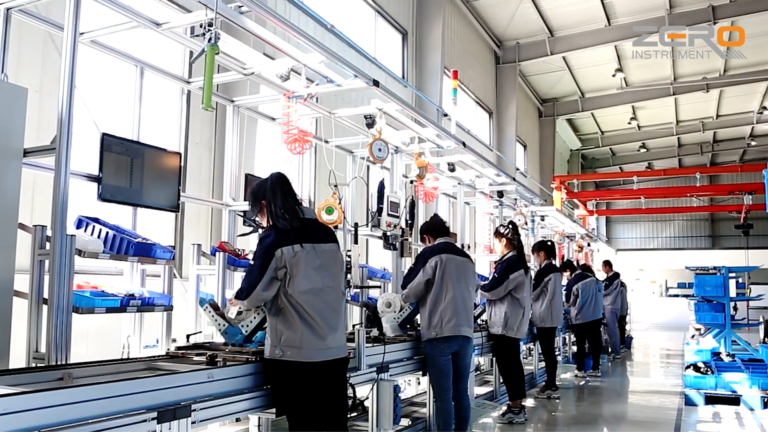
1. Electromagnetic Flow Meter
- Principle: Electromagnetic flow meters (magmeters) operate based on Faraday’s law of electromagnetic induction. When a conductive liquid flows through a magnetic field, it induces a voltage across the pipe. This voltage is directly proportional to the velocity of the liquid.
- Advantages: Magmeters are highly suitable for conductive liquids and are unaffected by changes in fluid temperature, viscosity, density, or pressure. They provide stable, accurate measurements for large-diameter pipelines.
- Applications: They are commonly used for measuring the flow of water, wastewater, and corrosive liquids in large pipelines.
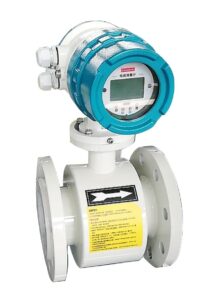
2. Ultrasonic Flow Meter
- Principle: Ultrasonic flow meters use sound waves to measure the velocity of the fluid. The most common types are the transit-time and Doppler effect ultrasonic flow meters. In transit-time meters, ultrasonic pulses are sent through the fluid in both directions, and the difference in travel time is proportional to the flow rate. Doppler flow meters, on the other hand, measure the frequency shift of sound waves reflecting off particles or bubbles in the liquid.
- Advantages: Ultrasonic flow meters are non-intrusive, as they can be clamped on the outside of the pipe, making them ideal for situations where the pipe cannot be cut or shut down. They can measure the flow of both conductive and non-conductive liquids.
- Limitations: The accuracy of ultrasonic meters may be affected by fluid temperature, gas bubbles, and suspended solids.
- Applications: Commonly used in potable water systems, wastewater treatment, and oil pipelines, ultrasonic meters are particularly useful in large-diameter pipelines where cutting into the pipe is not feasible.
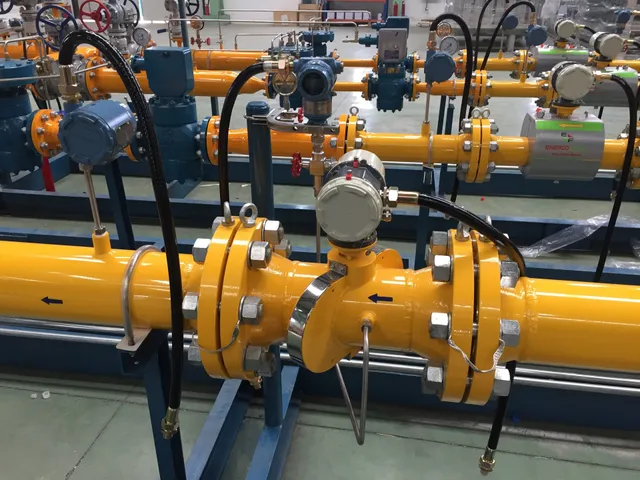
3. Differential Pressure Flow Meters (Orifice Plate, Venturi Tube, Nozzle)
- Principle: Differential pressure (DP) flow meters work by placing a restriction in the pipe, such as an orifice plate, Venturi tube, or nozzle. This creates a pressure drop across the restriction, and the flow rate can be calculated based on the relationship between pressure drop and fluid velocity.
- Advantages: DP meters are simple in design and suitable for high-temperature and high-pressure applications. They are widely used across various industries for their robustness and versatility.
- Limitations: These meters are sensitive to changes in fluid properties and flow conditions. The accuracy may degrade over time due to wear on the restriction elements, and they may introduce significant pressure losses in the system.
- Applications: DP meters are used in steam, gas, and liquid flow measurement, particularly in industrial processes that require robust and reliable flow measurement over a wide range of conditions.
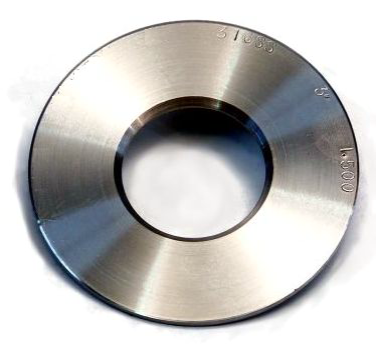
4. Vortex Flow Meter
- Principle: Vortex flow meters measure the frequency of vortices shed from a bluff body placed in the fluid stream. The vortex shedding frequency is proportional to the fluid velocity.
- Advantages: Vortex meters have no moving parts, which minimizes maintenance and ensures long-term stability. They are suitable for measuring liquids, gases, and steam and offer good accuracy in large-diameter pipes.
- Limitations: Vortex meters can be affected by changes in fluid density and pressure. They may also struggle to measure low flow rates accurately.
- Applications: Vortex meters are commonly used in industrial applications for measuring the flow of water, chemicals, and steam in large pipes.
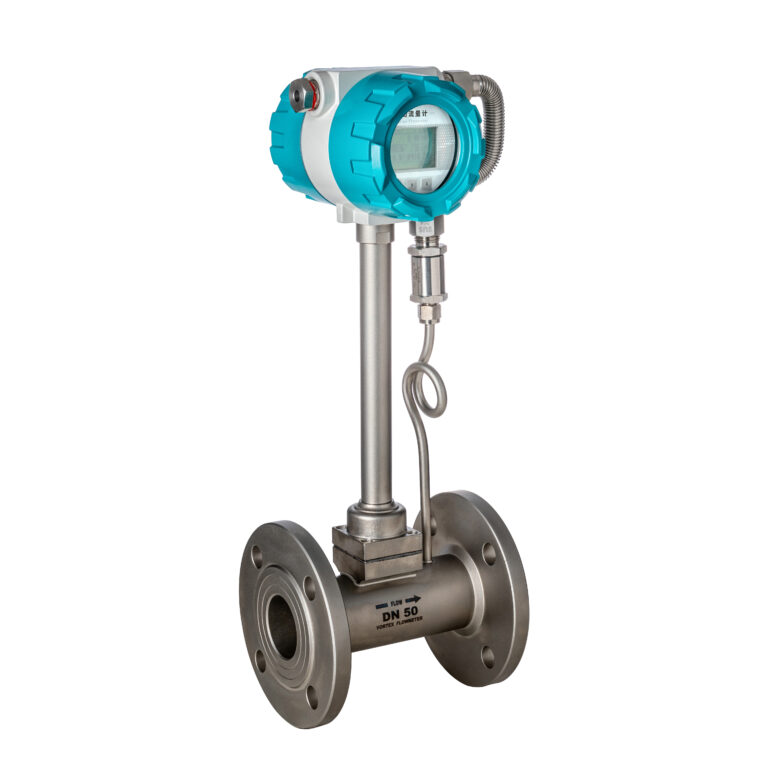
5. Coriolis Flow Meter
- Principle: Coriolis flow meters directly measure the mass flow rate of a fluid by utilizing the Coriolis effect. A vibrating tube is used, and as the fluid passes through the tube, the inertia of the fluid causes the tube to twist. The amount of twisting is proportional to the mass flow rate.
- Advantages: Coriolis meters provide highly accurate mass flow measurements, and they are not affected by changes in fluid properties such as density and viscosity. They can measure the flow of liquids, slurries, and even gases.
- Limitations: Coriolis meters tend to be expensive and are typically better suited for small to medium pipe diameters. For large-diameter pipes, they are often cost-prohibitive due to the size and complexity of the meter.
- Applications: Coriolis meters are used in industries where high precision is required, such as in chemical processing, petrochemical plants, and food and beverage production.
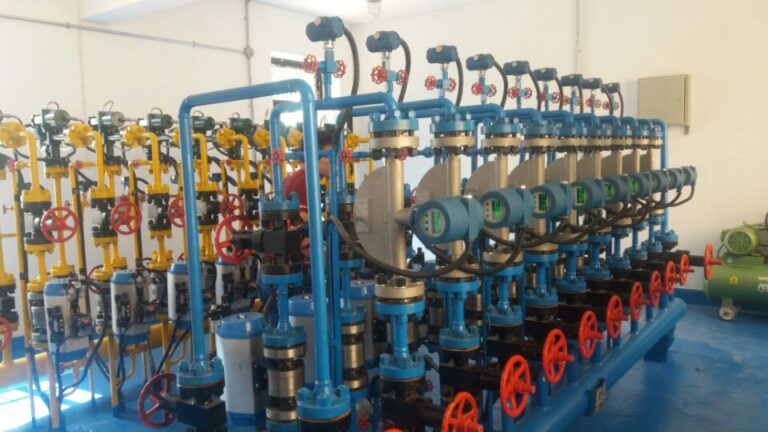
Factors to Consider When Choosing a Flow Meter
Several factors should be considered when selecting the appropriate flow measurement technique for large-diameter pipelines:
- Fluid Properties: The type of fluid being measured—whether it is conductive, non-conductive, viscous, contains particulates, or has bubbles—can influence the choice of flow meter.
- Pipe Conditions: The size of the pipe, as well as the fluid pressure and temperature, play a significant role in determining which flow meter will perform best. Some methods, like ultrasonic or electromagnetic meters, may be more suited to larger diameters.
- Required Accuracy: Different flow meters offer varying levels of accuracy. For applications that require precise flow measurement, such as in process control or billing, a high-precision flow meter like a Coriolis meter may be necessary.
- Installation and Maintenance: Some flow meters, such as ultrasonic or clamp-on meters, can be installed without disrupting the pipeline. Others, like orifice plates, may require shutting down the system for installation and maintenance. The ease of access and maintenance frequency should also be considered.

Conclusion
Measuring flow in large-diameter pipelines requires careful selection of flow measurement technology based on the specific application and fluid characteristics. Electromagnetic and ultrasonic flow meters are often the go-to solutions for large pipes due to their non-intrusive nature and ability to handle a wide range of fluids.
However, differential pressure meters and vortex meters offer durable and versatile alternatives for industrial processes. For applications requiring high precision, Coriolis meters, though costly, provide unparalleled accuracy.
The choice of flow meter should balance the need for accuracy, ease of installation, and cost-effectiveness to ensure optimal performance in large-scale fluid transport systems.
